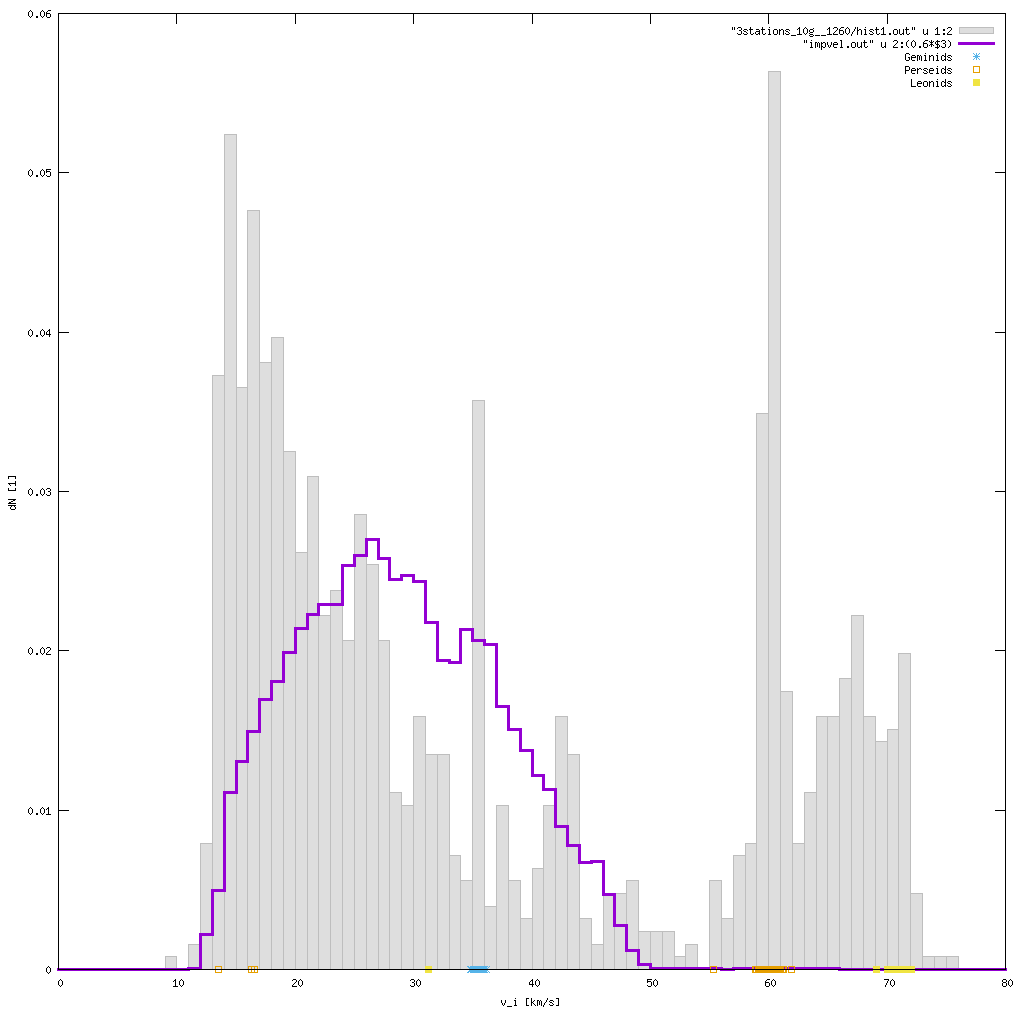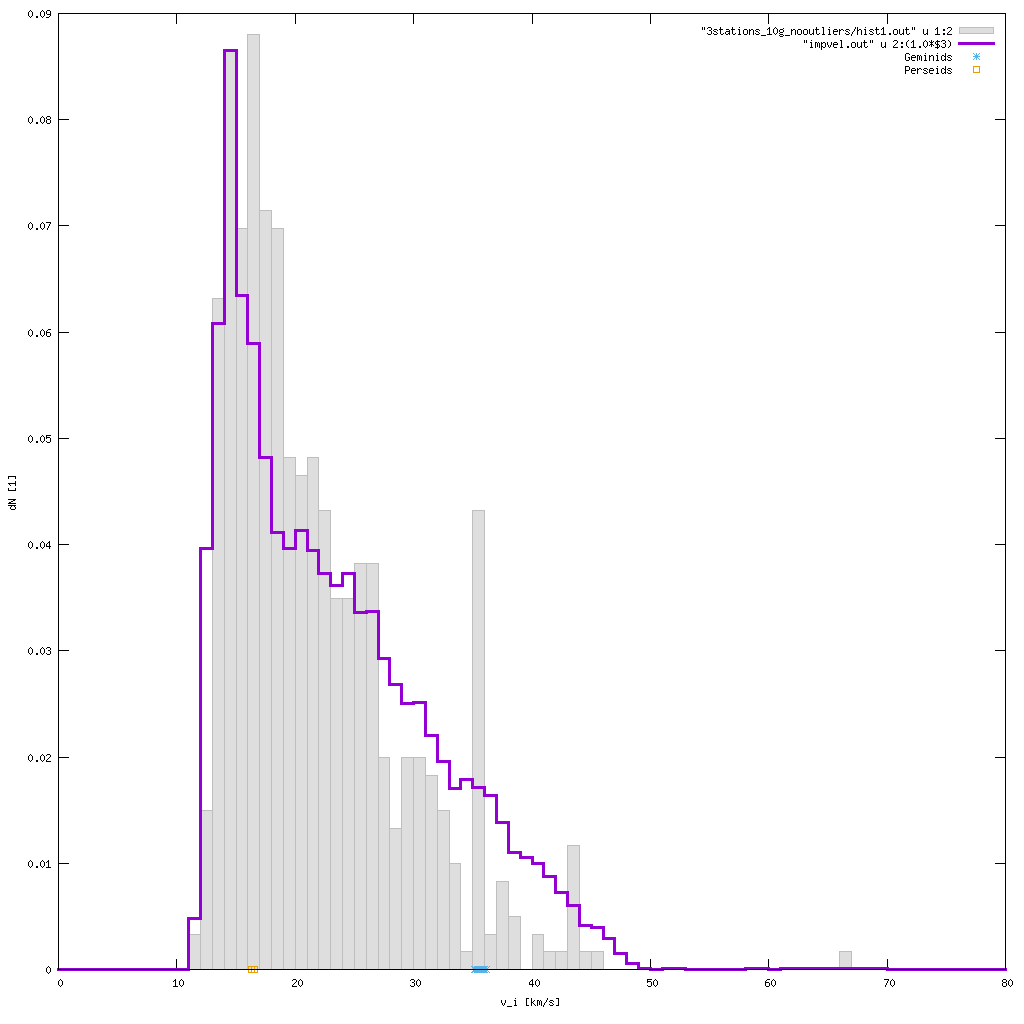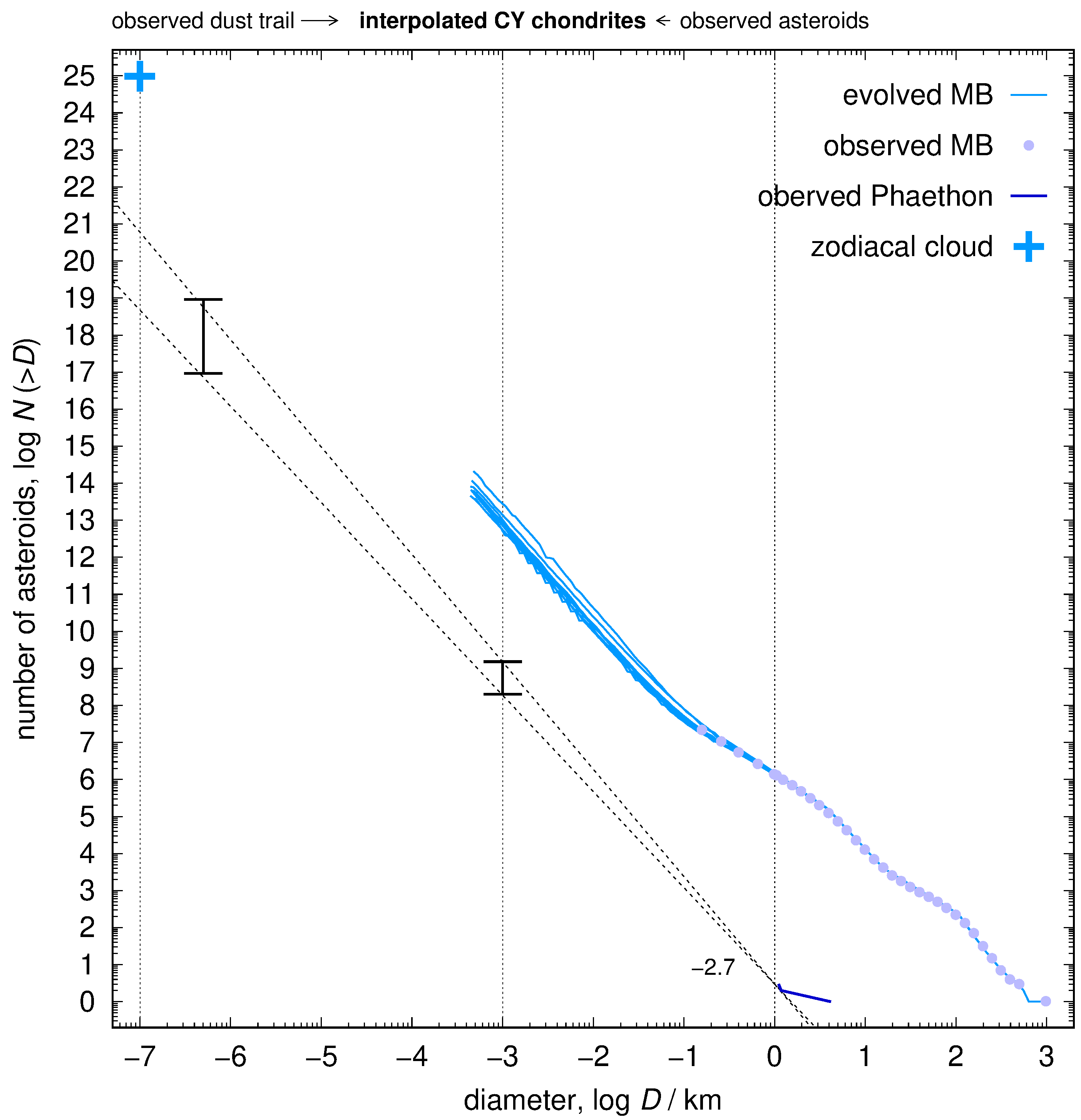
Synthetic velocity distribution (magenta), computed from our model containing 53 sources (families), compared to Fripon observations (gray). In this case, velocities were unweigthed. The distributions are different from each other.
 |
A modification, with velocities weigthed by collisional probabilities. The higher the speed, the lower the probability. This weigthing substantially modifies individual histograms, hence the resulting histogram. Consequently, the distributionis are similar to each other.
 |
Note: The left part is asteroidal, the right part cometary. Our model does not contains cometary sources, though. The peaks correspond to major cometary showers (Perseid, Geminids, Leonids).
Moreover, there is a serious problem with outliers (i.e., incorrect m_i, m_f, A, B). If all of them are removed, the so-called "cometary sources" disappear! It is an indication that for high-speed bolides, m_i values are indeed incorrect and perhaps the "cometary sources" are non-existent (I mean, for masses >10 g)? Anyway, it is quite hard to imagine that cometary dust particles reach >10 or >100 g, if they were lifted from the surface by aerodynamics...
 |
For Geminids, it was necessary to add (3200) Phaethon as an NEO (not MB) source. Using an interpolation between the observed SFD (i.e., only 3 bodies) and 500-mu dust (Battams et al. 2022), we obtained the respective population of metre-sized bodies. The fluxes were estimated exactly as for families. The result is -well- reassuring. :-)
 |
 |
Miroslav Broz (miroslav.broz@email.cz), Nov 19th 2023